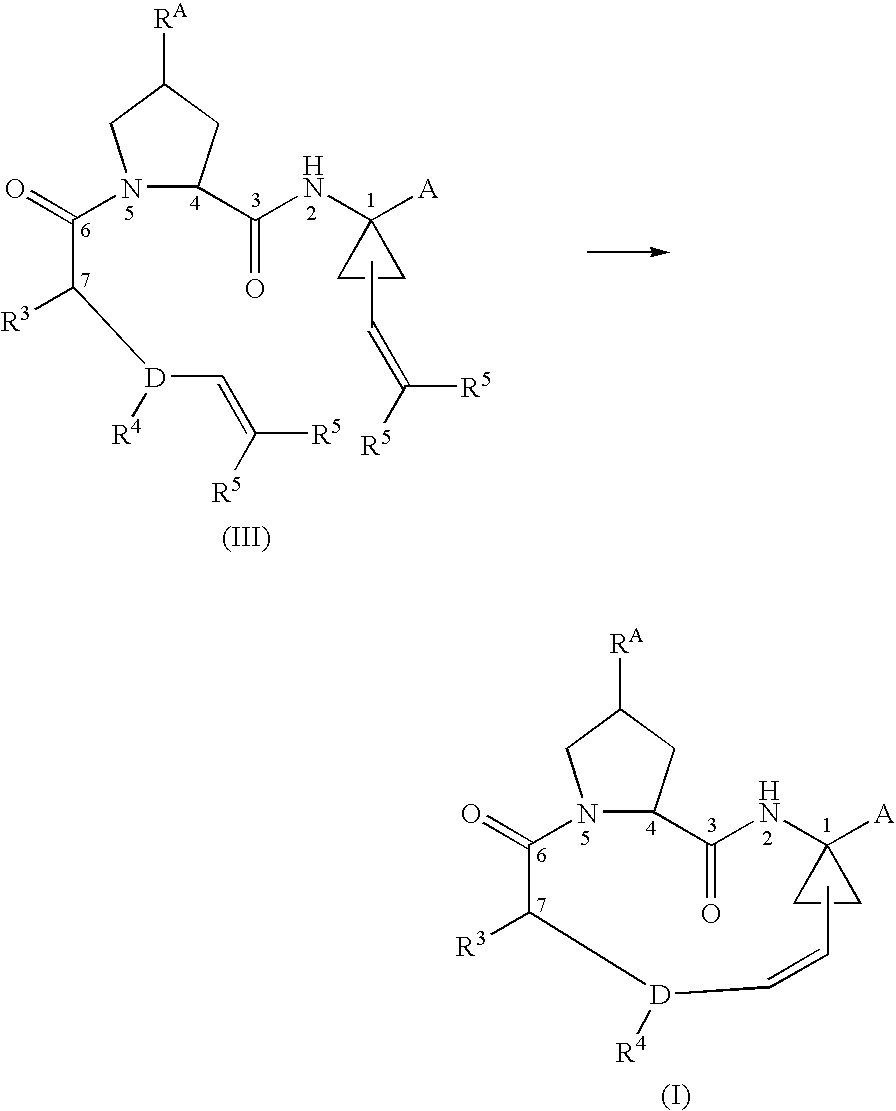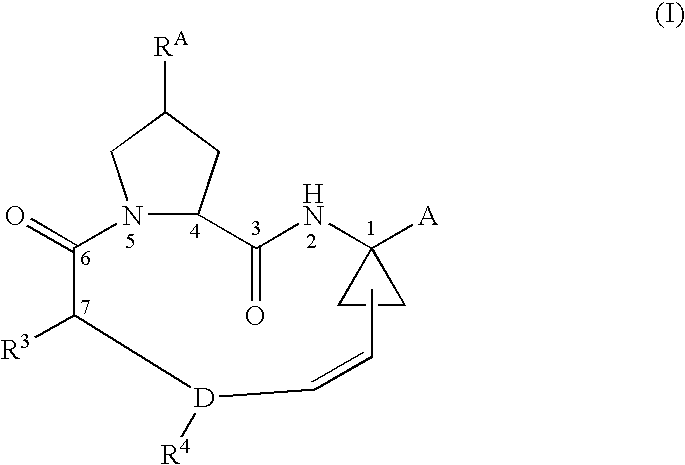Ring-closing metathesis process in supercritical fluid
a technology of supercritical fluid and metathesis method, which is applied in the direction of bulk chemical production, drug composition, peptide/protein ingredient, etc., can solve the problem of disclosure or suggestion that such a technique would be effective for higher molecular weight rcm products
- Summary
- Abstract
- Description
- Claims
- Application Information
AI Technical Summary
Benefits of technology
Problems solved by technology
Method used
Image
Examples
example 1
Preparation of a Brosylated Diene Intermediate 1
[0144]
Step 1: Introduction of the Boc-Protectins Group: Synthesis of (2)
[0145] The amino-protection was done with the Boc-protecting-group. (1) (trans-4-hydroxy L-proline) (249.8 g, 1.905 mol) was dissolved in water (375 ml) and 45% sodium hydroxide solution (203 g, 2.286 mol). To ensure good phase transfer, tert-butanol (106 g) was added. In a different procedure, acetone was used instead of THF / tert-butanol. The reaction mixture was heated to 50° C. and the anhydride Boc2O (424 g, 1.943 mol) was dissolved in THF (425 ml, or acetone) is slowly added. The reaction is exothermic and generates gas (CO2) as the Boc2O was added. If the reaction does not proceed as wanted, catalytic amounts of DMAP (2.3 g, 19 mmol) can be added. After the addition of the Boc2O, the reaction mixture is kept ½-1 h at 50° C., and the THF was removed by partial distillation. The pH of the remaining solution was adjusted to about pH3 with concentrated HCl (20...
PUM
| Property | Measurement | Unit |
|---|---|---|
| pressure | aaaaa | aaaaa |
| temperature | aaaaa | aaaaa |
| critical temperature | aaaaa | aaaaa |
Abstract
Description
Claims
Application Information
 Login to View More
Login to View More - R&D
- Intellectual Property
- Life Sciences
- Materials
- Tech Scout
- Unparalleled Data Quality
- Higher Quality Content
- 60% Fewer Hallucinations
Browse by: Latest US Patents, China's latest patents, Technical Efficacy Thesaurus, Application Domain, Technology Topic, Popular Technical Reports.
© 2025 PatSnap. All rights reserved.Legal|Privacy policy|Modern Slavery Act Transparency Statement|Sitemap|About US| Contact US: help@patsnap.com



